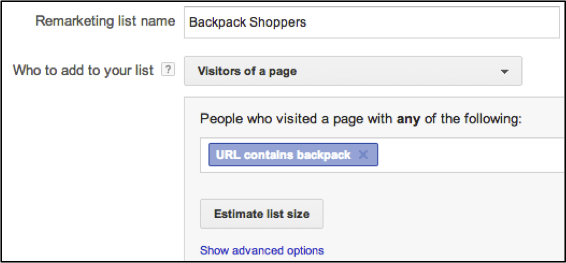It’s a common perception during new website builds or redesigns that search engine optimization (SEO) should be considered from the beginning. From keyword research to content creation, and through the user experience process, SEO needs to be addressed. However, questions surrounding how the new site will impact PPC efforts are rarely addressed.
I often encounter three areas that can add roadblocks to the success of PPC campaigns.
• Ineffective URL structure
• Lack of unique URL thank you pages
• Poorly written page titles
All three items may seem like minor details for PPC, but they can be the difference between turning a good campaign into a great one.
Ineffective URL Structure
We know that URL setup has an impact on SEO, but if the structure is incorrect, it can also negatively affect your PPC remarketing efforts. Let’s first take a look at how the remarketing code is implemented and then why URL setup can be prohibitive.
The Google remarketing code implementation is similar to Analytics in that it’s placed on every page of your site. In fact, you can append the Analytics code to support remarketing. This remarketing setup is extremely convenient because we can now create lists by URL instead of needing to add individual codes to specific pages. This situation is ideal if the URL structure follows a cascading format. For example, here’s a sample URL for a product category page:
www.example.com/backpacks
And here are sample product page URLs:
www.example.com/backpacks/abc-1000
www.example.com/backpacks/def-2000
www.example.com/backpacks/abc-backpack
If we wanted to create a remarketing audience targeting those visitors who viewed “backpack” pages we would create a list that includes all visitors of a page where the URL contains “backpack”
Since “backpack” is present in all four URLs (including the category page), any visitors to these pages would be included in our audience.
But let’s say the product specific URLs don’t have the category designation and look like so:
www.example.com/abc-1000
www.example.com/def-2000
www.example.com/abc-backpack
Our remarketing list would now only include two pages: the category page and the “abc-backpack” product. We would lose all visitors to product specific pages that don’t include the term “backpack.”
We still have the ability to manually tag pages, but this process is much more time consuming. First, new tags have to be generated and then need to be placed on the correct pages. In some cases, this implementation can be difficult for developers due to back end systems. In a nutshell, these are the reasons why there is now one site-wide remarketing code.
Lack of Unique URL Thank You Pages
Also related to URL structure, the ideal form and thank you page combo looks something like this:
www.example.com/contact-us
www.example.com/contact-us-thank-you
The conversion code is placed on the thank you page and it registers when a goal is completed. However, there are times where the form will resolve back to itself without a unique URL. For example, perhaps I fill out the contact us form and the page resolves with a thank you message, but the URL remains the same. Or, the thank you message might pop up in an iframe, again without a unique URL to place our code.
Custom solutions can be created to trigger the conversion code. Usually, the developer will have to create some sort of virtual pageview, or set a rule in order for the pixel to be fired. Conversely, advertisers can create a virtual pageview goal in Google Analytics and sync the conversion to AdWords. However, none of these options are as easy and convenient as placing the code on a thank you page.
Poorly Written Page Titles
This third area is more pivotal to eCommerce accounts because it relates to Dynamic Search Ads (DSAs). Description lines one and two in DSAs are predetermined, but the headline is generated dynamically based on the query. I’ve seen these headlines get pulled from any combination of the page title, headline, and/or content in the page body. Thus, it’s important for titles to contain each individual page’s targeted keywords.
Having well written, consistent page titles will also help with ad target inclusions and exclusions. As with URLs and page content, you are able to target pages utilizing specific titles. You may decide to only target pages whose title contains “backpack.”
Or, vice versa, you may want to exclude pages with a specific term in the title. Either way, writing consistent page titles helps for a more fluid DSA experience.
Conclusion
Though these website features may appear minor, they can significantly impact your PPC efforts. It’s worthwhile to bring these to your client’s attention, especially if a website redesign is taking place. In some cases these items cannot be changed or they conflict with other website initiatives, but it doesn’t hurt to discuss.





